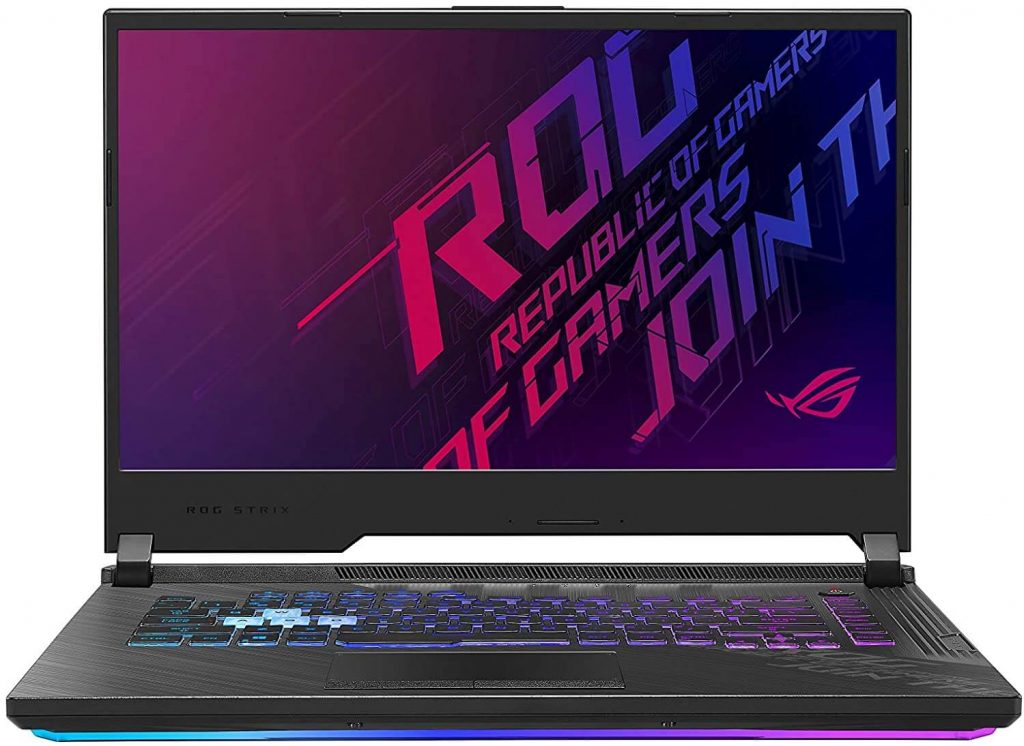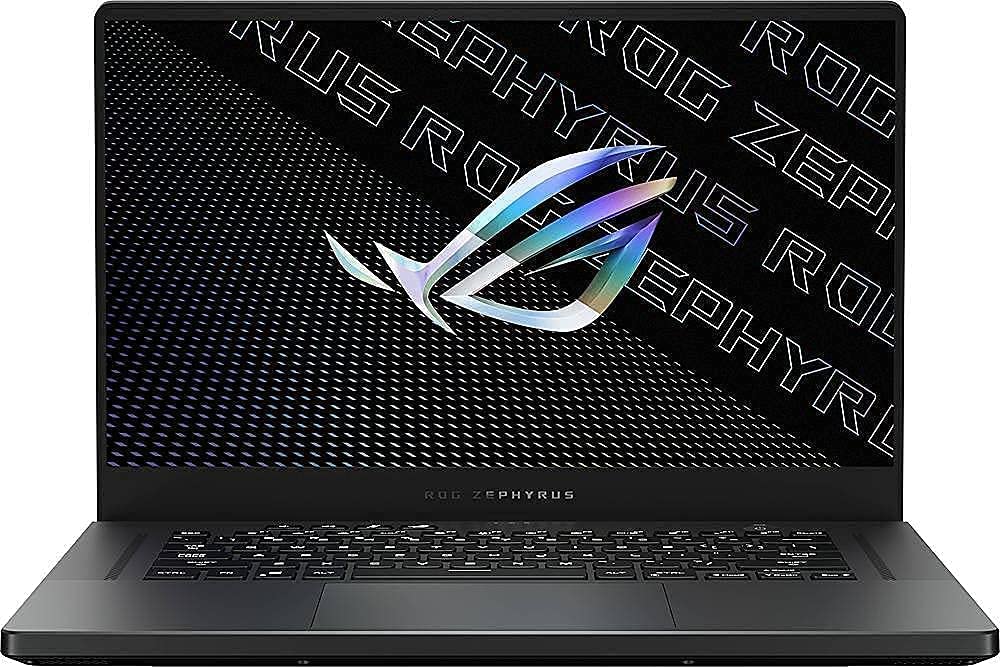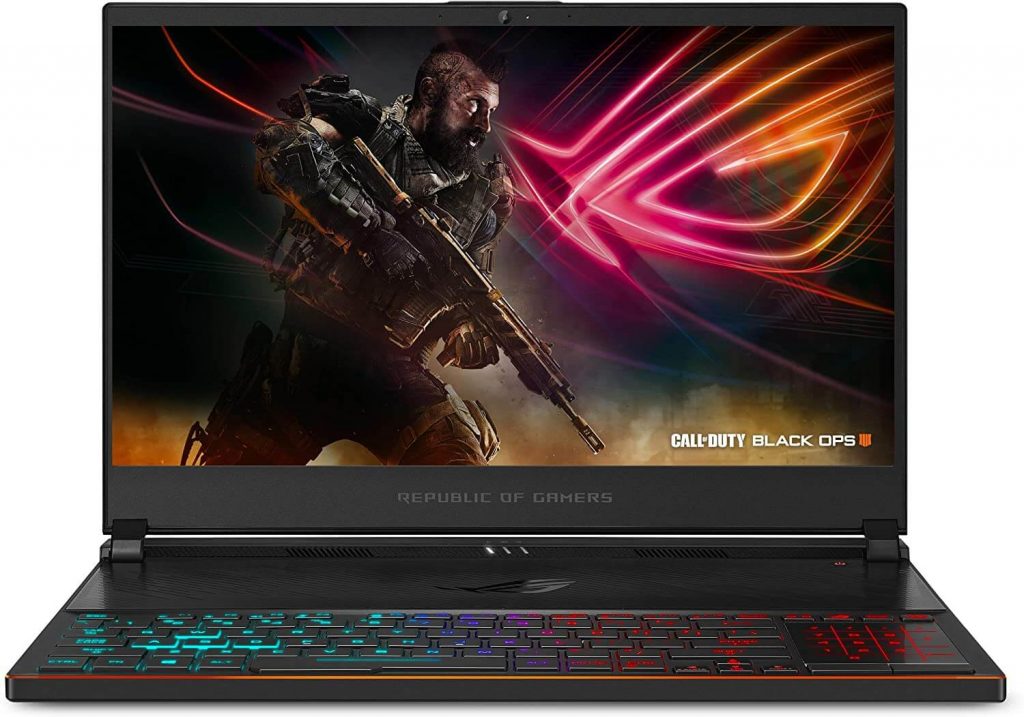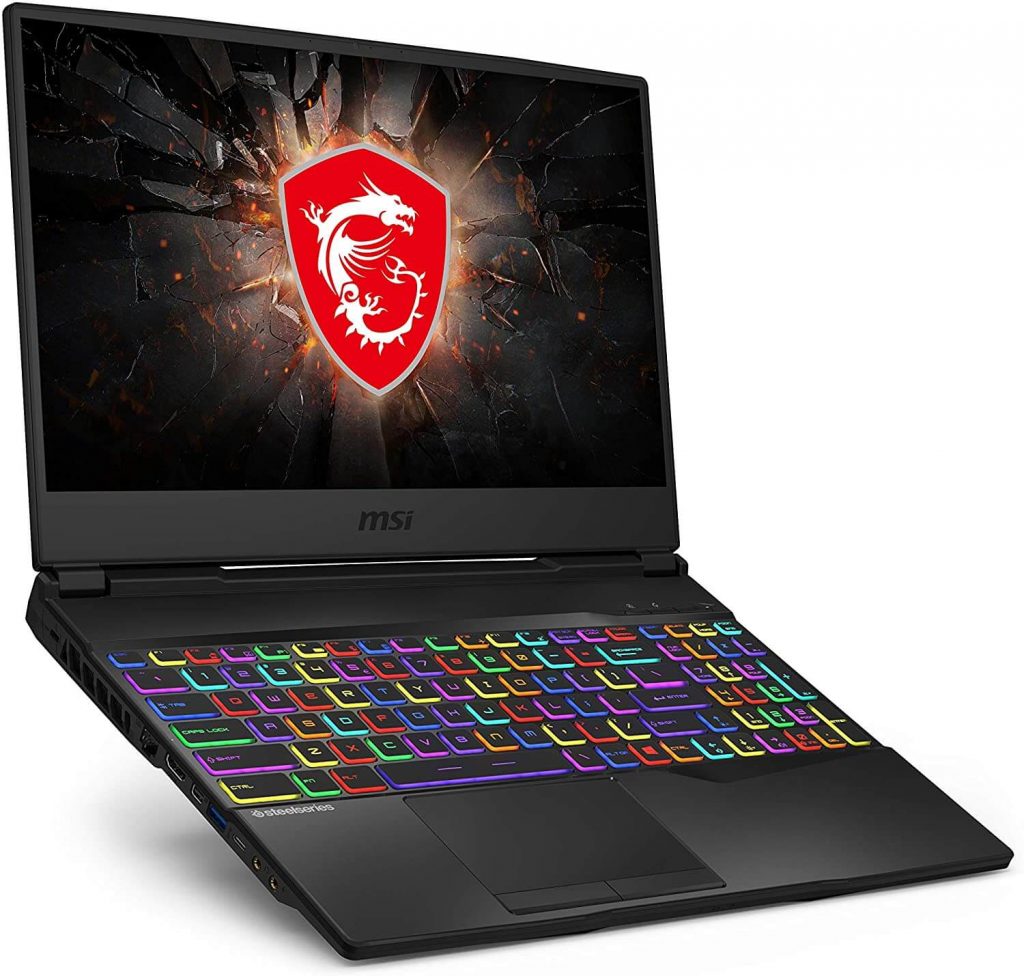10 Best Laptops For AutoCAD in 2022 – Step by Step Complete Guide
It is likely that you are an architect, an engineer, or a designer that needs a laptop designed specifically for AutoCAD. We will suggest you best laptop for autocad.
Computers demand a lot of powbodysol duschgel kaufen montre suunto 9 prix monsterroller gebraucht kaufen ford focus klimaanlage geht nicht site regarder match de foot vila hemdbluse rennrad chrom imkerjacke mit hut und schleier saca pelusas de ropa borse hogan 2016 prezzi amazon que regalar a un niño autista de 15 años jaguar parfüm männer קבוצות ארצות הברית כדורגל skelettuhr herren edelstahl stradivarius daunenmanteler when running CAD apps. The use of CAD-based technology directly links to 2D and 3D drawing and rendering; therefore, the best performance is obtained by using RAW GPU power. Laptops with NVIDIA GTX, RTX, and Quadro GPUs are common, but there are a lot of different models available. A laptop’s other specifications, such as the CPU, RAM, and storage, also vary.
Because of this, choosing the perfect laptop for you becomes extremely difficult. Fortunately, we’ve simplified the process for you. Here you can find the best laptops for AutoCAD, as you’ve landed on the right page. In addition to being extremely widely used, AutoCAD is also one of the best CAD programs of its kind and has gained a long-lasting reputation for providing excellent CAD features in both 2D and 3D work.
Thus, a professional designer needs a laptop that can run other software programs that are connected to AutoCAD, so that they can work together more frequently.
Although most laptops today will support some level of rendering and simulation, if you want to compete with the best AutoCAD professionals, you will need a device of higher specs and functionality.
You can use your system to plan, create, and forecast outcomes for many different projects, envision large infrastructure projects and even wireframe them if it is good and powerful.
I will discuss some of the benefits and disadvantages of the best laptops for AutoCAD in this post. Our comprehensive buyer’s guide is based on tests and comparisons of each model.
Table of Content
10 Best Laptops For AutoCAD

Taking note of the recommended and minimum system requirements for an AutoCAD laptop is your first step. AutoCAD’s publisher, Autodesk, has suggested these, and we’ve added similar options to give you a wide choice.
PC/LAPTOP SYSTEM REQUIREMENTS FOR AUTOCAD
MINIMUM SPECIFICATIONS :
- Operating System: 64-bit Microsoft® Windows® 10
- Processor: 2.5-2.9 GHz Processor
- Memory: 8GB RAM
- Display Resolution: 1920 x 1080 with True Color
- Display Card: 1 GB GPU with 29 GB/s Bandwidth and DirectX 11 compliant
- Disk Space: 10GB Disk Space
RECOMMENDED SPECIFICATIONS:
- Operating System: 64-bit Microsoft® Windows® 10 or Higher
- Processor: 3+ GHz Processor
- Memory: 16GB RAM
- Display Resolution: up to 3840 x 2160 supported on Windows 10
- Display Card: 4 GB GPU with 106 GB/s Bandwidth and DirectX 12 compliant
- Disk Space: 10GB Disk Space or Higher
MAC SYSTEM REQUIREMENTS FOR AUTOCAD
MINIMUM SPECIFICATIONS :
- Operating System: Apple® macOS® Big Sur v11, Apple macOS Catalina v10.15, Apple macOS Mojave v10.14
- Model: Apple Mac Pro® 4.1, MacBook Pro 5.1, iMac® 8.1, Mac mini® 3.1, MacBook Air®, MacBook® 5.1
- CPU Type: 64-bit Intel CPU
- Memory: 4GB RAM
- Display Resolution: 1280×800 Display
- Disk Space: 4 GB free disk space for download and installation
- Display Card: Mac native installed graphics cards
RECOMMENDED SPECIFICATIONS:
- Operating System: Apple® macOS® Big Sur v11, Apple macOS Catalina v10.15, Apple macOS Mojave v10.14
- Model: Apple Mac® models supporting Metal Graphics Engine, Apple Mac models with M series chip are supported under Rosetta 2 mode.
- CPU Type: Intel Core i7 or higher
- Memory: 8GB RAM or Higher
- Display Resolution: 2880×1800 with Retina Display
- Disk Space: 4 GB free disk space or Higher for download and installation
- Display Card: Mac native installed graphics cards
AutoCAD 2D
Both 2D and 3D models can be created with AutoCAD’s regular version. When you are a chemical engineer or an electrical engineer, or when you are working with contour maps, you will likely be using regular AutoCAD software, so you are able to work with more relaxed specs that would be suitable for small projects.
Additionally, these specifications allow you to run other software besides 3D viewports, like MatLab and Staad Pro.
AutoCAD 3D
The AutoCAD 3D version of AutoCAD, which features regular AutoCAD with 3D models, as well as AutoCAD Architecture, requires a more powerful hardware configuration. In addition to 3DS Max, Revit, SolidWorks, and SketchUp, this will also allow you to run others.
Project Size
We have provided the following metrics to give you a better idea of project size:
Small projects: available to students who use AutoCAD for their undergrad classes, with typical projects consisting of 300 parts.
Medium size projects: Completed projects ranging from 500 part assemblies to at most 200 part assemblies for anyone using AutoCAD outside of the classroom.
Large projects: Professional engineers working on collaborative projects in offices that often involve large 3D drawings with thousands of parts and polygons on multiple sheets, sometimes exceeding 5000 parts.
You may wish to check before purchasing a laptop the system requirements for AutoCAD work in your department if you are a student.
Best Laptop for AutoCAD
In light of the fact that so many factors need to be considered before you decide on your ideal type of CAD hardware, it makes no sense to recommend a laptop that will cover all CAD requirements. In this article, we have prepared a list of laptops that are suitable for CAD software with the most common types of workflow.
- Display Size: 15.6 FHD IPS 240Hz
- Screen Resolution: 1920×1080
- Processor: Core i7 10750H
- RAM: 16GB DDR4
- Storage: 1TB SSD
- GPU: 8GB NVIDIA RTX 2070
- Battery: 3 Hours
- Operating System: Windows 10 Home
To run AutoCAD at its optimal levels, professional designers, architects, infrastructure planners, and mechanical engineers require the most computing power available. ASUS ROG Strix G15, however, is one of the best PCs to invest in if you want an all-in-one device for those purposes without compromising on portability.
Asus’ 2D and 3D modeling laptop is equipped with an Intel Core i7-10750H processor that can handle even the most CPU-intensive tasks. The ROG Strix G15 will be able to handle almost any drawing or drafting task, database storage, data extraction, 2D annotation, and object layering task with ease thanks to its Hexa-Core architecture and turbo clock speed of up to 5GHz.
You get the insanely powerful NVIDIA GeForce RTX 2070 GPU, which can handle photorealistic rendering and 3D rendering without much difficulty. Combined with Intel’s Hyper-threading technology, the GPU enables real-time and advanced Ray-Tracing, allowing you to take advantage of Mental Ray rendering without any problems. Eight gigabytes of VRAM provide sufficient storage and processing power for high-end graphics textures.
If you work with more advanced applications like SolidWorks or Ansys, 8GB of video RAM might be overkill for most users, but it comes in handy. Any application involving the visualization of 3D meshes would implicate VRAM.
With 16GB of RAM, you’ll be able to run several datasets and programs at once. In terms of storage, there is a 1TB PCIe Solid State Drive available, which makes it possible to load files, applications, and Windows 10 Home in no time.
With the 15.6-inch Pantone-Certified display, AutoCAD runs smoothly. In spite of the 1920 x 1080 pixels on the existing screen, it is the 3ms overdrive response time that makes it a valuable tool for handling multiple renders and simple simulations. It also offers a color gamut of 128 percent sRGB, a screen-to-body ratio of almost 75 percent, and a 100 percent sRGB color gamut.
In addition to powerful speakers and a backlit keyboard, the ASUS ROG Strix G15 Thin is also equipped with a HD webcam and digital microphones for added productivity. One of the most impressive features is the innovative, low-noise cooling system, which includes a dust-resistant design and 17 percent better airflow than similar gadgets.
A sleek metallic chassis justifies the G15’s name. Despite weighing 5.28 pounds, it is not an overly heavy device, making it portable in order to ensure productivity while traveling. Among the ports available are Type-A, Type-C, Type-2 Type-A, and Type-C and other legacy ports providing data and display functionality. Although the battery specs have been beefed up, it still delivers a consistent 3-hour battery backup.
In terms of overall performance and price, the ASUS ROG Strix G15 is one of the more expensive and powerful laptop computers for running AutoCAD. It’s also possible to play games from time to time and create content with a powerful GPU on board.
- Display Size: 15.6 FHD IPS 240Hz
- Screen Resolution: 1920×1080
- Processor: Core i7 9750H
- RAM: 16GB DDR4
- Storage: 1TB SSD
- GPU: 8GB NVIDIA RTX 2070
- Battery: 3 Hours
- Operating System: Windows 10 Home
Zephyrus is ASUS’s premium alternative to Strix, which is perfect for modeling projects that require a large-scale laptop. With Zephyrus, professionals such as engineers, architects, and mechanics can have everything they need.
The i7 CPU on Zephyrus is older than that on Strix, but it is as powerful (or more) at handling 3D modeling tasks. In other words, Zephyrus’s i7’s CPU mark values are better, based on CPU-monkey. As a result, Zephyrus is faster than Strix, despite its 16GB rather than 32GB of RAM.
In contrast, Zephyrus outperforms most laptops on the market when it comes to its GPU. Asus equipped the laptop with the high-end RTX 2070 GPU, which will easily handle any photorealistic modeling or 3D project. Besides being able to run top-tier games, this graphics card also features 8GB of VRAM, which will help with 3D models with demanding textures.
In addition, Zephyrus comes with the best screen. It is amazing that the Pantone Validated 15.6” display reveals 100% of the sRGB color gamut, while its response time is 3ms. In addition to that, this laptop is lightweight (4.4 pounds) and ultra-thin (18.9 mm). It is therefore an excellent choice for professionals who need a portable device.
On our list, it has the biggest SSD, and it can also store your 3D project. Zephyrus is a gaming laptop with a futuristic design and a backlit keyboard that is specially designed for gamers.
If you are an AutoCAD professional looking for one of the most powerful, portable laptops, the Asus Zephyrus is worth your consideration.
- Display Size: 15.6 FHD IPS 165Hz
- Screen Resolution: 2560x1440p
- Processor: AMD Ryzen 9 5900HS
- RAM: 16GB DDR4
- Storage: 1TB SSD
- GPU: 8GB NVIDIA GeForce G=RTX 3070
- Battery: 3 Hours
- Operating System: Windows 10 Pro
The screen size of the ROG Zephyrus G15 is pretty decent at 15.6 inches. There is a 2560×1440 pixel resolution on this QHD display. An IPS-type display with 165hz refresh rate is used on this display. This laptop is powered by the AMD Ryzen 9 5900H processor, a mighty laptop processor. There are 8 cores in this processor, and there are 16 threads for incredible performance.
Processor clock speed is 3.1GHz with a maximum speed of 4.6GHz. A total of 8GB of video memory is available on the laptop’s NVIDIA GeForce RTX 3070 video card. This laptop is equipped with 16GB of RAM, the sweet spot for most high-performance laptops. RAM is of the DDR4 type and is very fast, clocking at 3200 MHz.
Moreover, a PCIe SSD has been used to provide 1TB of storage. The combination of specifications makes this a powerful laptop, and you should definitely consider it for use with AutoCAD as long as your budget allows it. For a lesser price, there are many more suitable options on the market.
- Display Size: 15.6 FHD 4K UHD OLED
- Screen Resolution: 3840x2160p
- Processor: Core i7 11800H
- RAM: 16GB DDR4
- Storage: 1TB SSD
- GPU: 8GB NVIDIA GeForce RTX 3070
- Battery: 3 Hours
- Operating System: Windows 10 Pro
These days, high-end specifications are becoming more mainstream. It’s the GIGABYTE AERO 15 that takes the first step in that direction. Its high specifications make it an attractive laptop. This laptop is one of the best choices for professionals and serious AutoCAD users.
High-performing AutoCAD tasks, such as 3D modeling, can be performed on the laptop’s high-quality 15.6-inch 4K UHD display. The display is excellent and can handle multiple things at the same time in AutoCAD. With an Intel Core i7-11800H processor, this laptop has the power to handle heavy processing. It is one of the best processors in this category. 2.3GHz and 4.6GHz are the base and boosted clock speeds of this processor, which has 8 cores and 16 threads.
However, it also has the new Nvidia RTX 3070 GPU, which is part of the RTX 30 (RTX 3050, RTX 3060, RTX 3070, etc.) series. GDDR6 video memory is provided by this GPU. Additionally, if 512GB of SSD storage isn’t enough for you, the Alienware M17 comes with 1TB SSD storage and 16GB of DDR4 RAM. Overall, this is one of the cheaper laptops with such high specifications. As such, if you are looking for a high-end laptop at an affordable price, this is an excellent choice.
- Display Size: 15.6 FHD IPS 144Hz
- Screen Resolution: 1920x1080p
- Processor: Core i7 8750H
- RAM: 16GB DDR4
- Storage: 512GB SSD
- GPU: 8GB NVIDIA GeForce GTX 1070
- Battery: 3 Hours
- Operating System: Windows 10 Home
Last but not least, there’s the ASUS ROG Zephyrus S Gaming Laptop, yet another excellent option for running AutoCAD. Although this laptop is far from being affordable, experienced professionals will find that the hardware configuration of this laptop makes the price seem like a steal given how powerful it is.
This powerful desktop workstation features an 8th gen Intel Core i7 processor, 16 gigabytes of DDR4 RAM, 512 gigabytes of NVMe solid state storage, and a superior NVIDIA GeForce GTX 1070 graphics card.
The storage space alone will keep you from deleting or moving any files for more than two years. There are other advantages, too. Additionally, this laptop has a full HD display with a high frame rate, as well as a backlit keyboard. Furthermore, this laptop can be used for SketchUp, ProgeCAD, DraftSight, and TurboCAD.
- Display Size: 15.6 FHD IPS 144Hz
- Screen Resolution: 1920x1080p
- Processor: Core i7 10750H
- RAM: 16GB DDR4
- Storage: 512GB SSD
- GPU: 8GB NVIDIA GeForce RTX 2060
- Battery: 3 Hours
- Operating System: Windows 10
Razer Blade is a smart choice for you in many ways if you are confused about which laptop you should purchase for your AutoCAD workstation.
This laptop is perfect for running 3D modeling software and 2D modeling applications. A significant number of users made an annoying comment about the previous Razer Blade 15 model. This time, however, manufacturers did not take any risks.
They took care to make enough changes to the model from the Razer Blade series. This model has an iCore 7 10750 H 6Core processor instead of the previous model’s iCore7 9750H.
Therefore, it is quite dependable when it comes to multitasking. In addition to its undisputed multitasking capability, this particular model enables your system to access online servers at incredible speed while completing other tasks without a hitch.
This laptop offers a performance of up to 5.0 Mhz. You can easily complete your work with this laptop’s turbo clock speed.
People who see enhanced performance as a wise decision are considered in most cases. With a dedicated 8GB GDDR6 VRAM to ensure real-time ray tracing, the NVIDIA GeForce RTX 2060 graphics memory processor has Max-Q design.
During a long gaming session, this would be useful to you as a gamer. Razer blade 15, besides playing high-definition online games, is also an excellent ‘blade maker’s choice’ if you’re into game development.
The Razer Blade adds sharpness to every inch of the character, whether it’s a game character or a Navy Seal who you’re framing for BattleField:4 or Call of Duty: Modern Warfare, etc.
With its high frame rate gaming screen, the characters will come to life in unbelievable color detail. Full HD 1920*1080 resolution is available on the 144Hz screen. All actions on the screen are smooth and fluid.
The laptop’s 15.6-inch display supports 100% sRGB color quality, and its thin bezel offers colorful, accurate visuals.
- Display Size: 15.6 FHD IPS
- Screen Resolution: 1920x1080p
- Processor: Core i5 10300H
- RAM: 16GB DDR4
- Storage: 256GB SSD
- GPU: NVIDIA GeForce GTX 1050
- Battery: 3 Hours
- Operating System: Windows 10
The MX250/MX150/940M “passage degree” computer this year is also omitted, and instead I am beginning with a “mid-range” gaming computer, which I am confident will have sufficient GPU performance for approximately 80% of you.
Understudies or those wishing to start with AutoCAD may find it a lot, but the explanation I am giving is that computers with dedicated GPUs are more expensive.
Since AutoCAD and Revit are not advanced yet for “multi-stringing” or advanced video steering, I am no longer considering a middle i7 tenth generation processor or higher level GPUs like the RTX 2070 either.
In addition, I believe AutoCAD 2017 ran extremely well on a HP laptop with a 940MX.
This 1650 is a drastically more powerful device than the CPU. Truth be told, you may only be utilizing one half of 1650’s power for the majority of your activities.
- Display Size: 15.6 FHD IPS 144Hz
- Screen Resolution: 1920x1080p
- Processor: Core i7 10750H
- RAM: 16GB DDR4
- Storage: 512GB SSD
- GPU: NVIDIA GeForce RTX 2060
- Battery: 3 Hours
- Operating System: Windows 10 Home
Featuring a 15.6-inch full HD display with anti-glare LED backlight, anti-touch, and a narrow border, this laptop is perfect for AutoCAD.
Aside from the NVIDIA GeForce RTX 2060 graphics card, the Intel Core i7-9750H processor supports the latest Intel Turbo Boost Technology that increases performance up to 4.5 GHz using the 12-MB cache.
Specifically, the RAM of the system has been increased to 16 GB for smooth multitasking. This is in addition to high bandwidth to ensure the smooth, simultaneous operation of multiple apps and browser tabs.
Due to its 512 GB storage capacity and SSD technology, it provides fast and easy access to stored files.
In addition to an HDMI 2.0 port, the system comes with three SuperSpeed USB 3.1 Gen 1 Type A ports, one with PowerShare, one SD card reader slot, one wedge lock slot, one headphone jack, and one microphone jack.
You can mark up Web pages on your screen with the Edge Web browser on the Windows 10 Home operating system, making AutoCAD work even better, faster, and smoother.
- Display Size: 15.6 FHD IPS 144Hz
- Screen Resolution: 1920x1080p
- Processor: Core i7 10750H
- RAM: 16GB DDR4
- Storage: 512GB SSD
- GPU: 4GB NVIDIA GeForce RTX 2060
- Battery: 4 Hours
- Operating System: Windows 10 Home
With its fastest Intel Core i7 10th Gen processor, the GL65 Leopard is a gaming laptop. We’ve already mentioned that AutoCAD requires a lot of processing power. In other words, it puts a heavier burden on your processor than youre graphics unit.
Leopard has made it onto our list of the Best laptop for AutoCAD because it utilizes the latest Intel technology.
All your software and multitasking requirements will be met by the roaring 10th generation CPU, with extra processing power left over. Because of this, the leopard is among our top recommendations for best laptop for AutoCAD.
In addition to having one of the best graphics processors on the market, it also has a dedicated processor. As part of the Turing architecture, the 2070 features Ray tracing technology.
AutoCAD users will find this overkill once again. Despite this, the latest games will run smoothly at high frame rates, and AutoCAD will barely cause the laptop to breath. The best laptop for AutoCAD will always give you more power in your hand.
It has almost six times the output ratio of a regular SSD because it transfers data using the NVMe protocol.
The 16 GB DDR4 RAM makes your laptop run multiple programs and AutoCAD without even flinching. This computer will enable you to experience a smooth AutoCAD experience and is certainly on our list of best laptops for AutoCAD.
- Display Size: 15.6 FHD IPS 144Hz
- Screen Resolution: 1920x1080p
- Processor: Core i7 10750H
- RAM: 16GB DDR4
- Storage: 512GB SSD
- GPU: 6GB NVIDIA GeForce RTX 2060
- Battery: 3 Hours
- Operating System: Windows 10 Home
Gaming laptops have always been Alienware’s specialty. With almost all top-of-the-line specs, the Alienware M15 stands out as the thinnest Alienware laptop available on the market.
There are four cores of the 10th Gen Intel i7 processor, which is capable of clock speeds of up to 5.1 GHz.
Compared to traditional processors, it is faster since traditional processors require 8 cores but still cannot match the power of 10th generation i7s.
It is for this reason that the M15 is our choice as the best laptop for AutoCAD. Aside from being top-of-the-line in terms of technology, the M15 is sleek and lightweight, thanks to its alloy-built body. Its sleek, modern design is due to the alloy finish.
This graphics card features ray tracing and the latest Turing architecture, as well as the GeForce RTX 2060.
It goes without saying that the hottest names in gaming will be running seamlessly in M15.
You will not mind having spare power when working with laptops even though the graphics card is an overkill for just running AutoCAD.
SSD memory is available on the M15. While working on your computer, you can bypass the southbridge with an M.2. Simply put, it is much faster than a standard SSD. By adding 16 GB of DDR4 RAM to the equation, you can comfortably multitask and play high-end games on a smooth-sailing laptop.
Having the M15 in the top ten best laptops for AutoCAD is overkill. However, customers do not care.
Buying Guide – How to Choose the best laptop for AutoCAD?
As you’ve seen, you need specific system requirements to run AutoCAD on a laptop, as well as our top recommendations for AutoCAD laptops. Now let’s talk about what specifications you need to work with each AutoCAD version, and why you need each of them.
Knowing how your laptop works with AutoCAD, which you’ll be using mainly in your line of work, will help you choose the right tools and increase your productivity.
You can certainly make do with less powerful, cheaper notebooks if you are just a college student working on simple projects.
AutoCAD 2D VS 3D
You must know your workflow before purchasing a laptop for AutoCAD. A lot of 2D and 3D drawings take place in AutoCAD, so if your project requires a lot of 3D work, you cannot skimp on CPU or GPU specs. Choosing a very high-end laptop will be a waste of money if your main task involves 2D drawing in AutoCAD. Thus, it’s imperative to understand how you use AutoCAD.
Processor
Essentially, it is the heart of your computer, where all the computation takes place. PC and laptops with the Intel i3, i5, and i7 are predominantly used by consumers, while enterprise/drawing offices primarily use the Xeon.
The market for processors is not dominated exclusively by Intel. AMD’s Ryzen and Threadripper CPUs have recently returned to the high-end market, but they haven’t yet become a mainstay in corporate workstation builds.
You can also opt for a dual-core processor if your budget is extremely tight. Our recommendation is to use 11th generation Intel i5/i7 processors or AMD Ryzen 5 or Ryzen 7 chipsets. Ryzen 9 is there to give you the best-in-class performance when it comes to CPU performance. Furthermore, you should seek out a processor with a good clock speed since the clock speed of your individual cores will significantly affect your AutoCAD’s performance after the multi-threaded performance.
Cores and Threads
The number of cores in a processor is called the clock speed, and it is measured in gigahertz (GHz). Now, it is rare to see single or dual-core processors, and the majority of common processors have four cores or more. The high end i7 had six cores, Ryzen had eight, and Xeon/Threadripper had 12 or more cores.
3D modeling and drafting software like AutoCAD operate on a single thread. Since they only use one core for each task, it makes sense for them to have a higher clock speed.
As Autodesk continues to develop and rewrite their source code, more and more features within 2D and 3D CAD applications can now benefit from multi-core support.
When working with newer rendering software like Vray, Maya, or Blender, it’s common for the software to be multithreaded, so a processor with more cores would be more appropriate.
Multiple concurrent operations are therefore possible with more cores, resulting in faster processing. Multithreaded software requires a standard quad-core with hyperthreaded or simultaneous multithreaded capabilities (SMT). Almost all light and medium CAD workflows should be powered by such a processor.
You would benefit from the additional cores in simulation or rendering software, such as Ansys or Keyshot, however, which over time would provide a good return on investment for the higher price of a higher end CPU.
Overclocking in CPU
Overclocking is supposed to improve the performance of your processor. In any case, I do not recommend overclocking a PC that you use to make money e.g. a PC used for a commercial project or in a professional office.
The overclocking of a computer increases its instability. Overclocked computers are more likely to crash completely, regardless of how many stress tests they have passed.
In summary, overclocking is fine at home or for students, but I would never recommend it for a business user. For CAD software, the gains are usually minimal, and the risks associated with it are insignificant.
Furthermore, not all processors can be overclocked. For instance Xeons are not overclockable, and all AMD Ryzen based processors can be overclocked. Additionally, make sure your motherboard allows you to overclock the processor as well.
RAM
AutoCAD, like many CAD applications, consumes a lot of memory. AutoCAD will require a significant amount of RAM on your laptop, whether it is 2D or 3D. You should have at least 8GB of RAM on your laptop for AutoCAD to run smoothly along with other minor apps. As a minimum requirement, your laptop should have a 16GB RAM configuration so that you won’t experience lag when using AutoCAD in multitasking.
Storage
Hard drives and solid state drives are the two main types of storage solutions for laptops. SSDs always perform better no matter what the criteria is. Among other things, SSDs are faster at reading and writing than hard drives. As well as being smaller, lighter, and taking up less space, they also consume less electricity.
While SSDs are slightly more expensive, a combination of the two may be a good option if you need lots of storage but cannot afford a massive SSD. An external hard drive may also be an option. Ultimately, it’s up to you. It can be pretty cumbersome to transfer files back and forth between the external HD and your laptop.
SSDs and HDDs (Storage)
It’s subjective to decide how much storage you want, as long as it’s consistent with your workflow. But the best primary storage option is SSD storage. You can store spare data on an additional HDD drive if you want. Solid-state drives are fast storage devices that allow users to read and write data more rapidly than traditional hard drives. Therefore, SSDs should take precedence over HDDs.
Graphics Card (GPU)
In general, it is believed and preached that CAD workflows are among the most demanding graphical workflows, and that GPUs are very powerful and expensive and specifically designed for CAD. It doesn’t always hold true; nevertheless, it can vary depending on the software vendor.
AutoCAD applications graphics engines, for example, are highly CPU-dependent. As CPU clock speeds increase, performance increases linearly, with little reliance on the GPU. GPUs are usually used to store texture information in the video memory on the card (VRAM) of CAD applications, while CPUs are usually used to calculate what should be displayed on screen.
We suggest home users purchase a gaming grade card, while professional users purchase a professional card. While most Autodesk applications are compatible with both gaming and professional graphics cards (GeForce & Radeon), we recommend professional users purchase a professional graphics card.
In deciding on a GPU, there are many other factors to consider, such as the number of applications you will use. Therefore, I cannot advise on what to choose, but as a general rule, a GPU should have at least 4GB of VRAM.
Integrated GPU
You won’t have trouble viewing a viewport on a cheap integrated GPU if you are working on relatively small projects. You can even make do with an Intel HD card if you have at least a Core i5 processor and enough RAM to boot the system. Since this does not apply to professionals, they must buy a dedicated GPU.
Dedicated Graphics Card (GPU)
When it comes to selecting a GPU, the problem begins because many of the options available are not compatible with AutoCAD, and the list of compatible models available on AutoDesk is far from comprehensive. It is for this reason that you’ll need to make sure the GPU in the laptop you’re considering will work with AutoCAD.
Monitors
Basically, the bigger the monitor, the better. Look at the LG 34UC79G for example for a great ultrawide monitor for CAD. The aspect ratio is 21:9 and it is a mid-range resolution of 1440p between regular 1080p and 4K. On a monitor like this, you get a screen space that is absolutely staggering. It is beyond anything you can get with 4K at a 16:9 aspect ratio.
It is tough to justify buying widescreen displays in business environments, but they are incredibly multi-tasking and give you incredible CAD modeling or drafting space.
A 4K monitor also has the drawback of not being supported by many programs. This can result in very cluttered dialog boxes and tiny text that is nearly impossible to read.
Furthermore, the number of pixels to try and generate and send to the monitor is roughly four times greater. Therefore, the CPU and GPU have to be much more powerful. I would not recommend using 4K for CAD, even though AutoCAD handles it quite well.
Display
Especially when working with AutoCAD and 3DS Max, you need to take the laptop’s display quality into consideration, since better visuals lead to better results. For accurate color and wider viewing angles, go for a full HD display with IPS technology, or even 4K for an improved overall experience.
Size
Unless you’re going to be using it extensively, a 13″ screen is the smallest screen you should consider for AutoCAD. This screen is only practical for students who won’t be using it heavily, and even then they’ll be using the computer lab’s giant PCs. When buying an 11-inch laptop, you should only do so if you plan on using it for everyday tasks.
CAD professionals should consider a laptop with a 15-inch display. It is possible to buy a 17-inch laptop if you do not have issues with portability, but you will struggle with its sheer bulk and weight.
Resolution
A higher screen resolution allows for more tools to be rendered in the viewing area, thereby allowing you to work with a greater portion of the interface alongside the canvas. By doing this, you are also able to quickly access tools and commands instead of having to navigate through menus.
Laptops with dedicated GPUs commonly come with displays of at least 1080p or full HD. In spite of the fact that 4K sounds like a dream, keep in mind that it is more expensive and also is not designed to work well with CAD software, so you might find yourself having more trouble using it, for starters, with the strangely sized and placed tools.
Operating System
Since AutoCAD is optimized for Windows, all the laptops we reviewed on this list come with the operating system. Although we have no problems with Macs whatsoever, it’s just the fact that it’s not really compatible with most AutoCAD software, so stay away from the Mac OS unless you’re willing to double-boot your Mac with Windows.
FAQ – Frequently Asked Questions
Conclusion
Hundreds of engineering disciplines use AutoCAD for their practical work, making it one of the most versatile tools in the industry. Mechanics and electrical engineers can build engines, and many other things as well. The performance and operation of your laptop are mostly determined by its processor or CPU. Although the CPU is the most important component that determines whether AutoCAD runs smoothly, it alone cannot guarantee smooth operation.
As a result, the best laptop for AutoCAD work is more powerful than the average laptop due to the fact that you’ll have to draft 3D models, design visual floor plans and architectural designs, and even work on engineering designs.
Gaming laptops can also be used for CAD designer work, depending on your budget and operating system. However, there are other options as well, depending on your budget and operating system requirements.
When it comes to designing and drafting, Windows is often the best option. Microsoft’s Windows operating system is compatible with applications that were specifically designed for AutoCAD & drafting use on a laptop.
Many professionals recommend that you purchase the most powerful laptop you can afford rather than the bare minimum requirements since you’ll likely be using it for months at a time for many years.
Hope this post was helpful to you and please let me know if you have any questions or comments in the comments section!
Read More :














